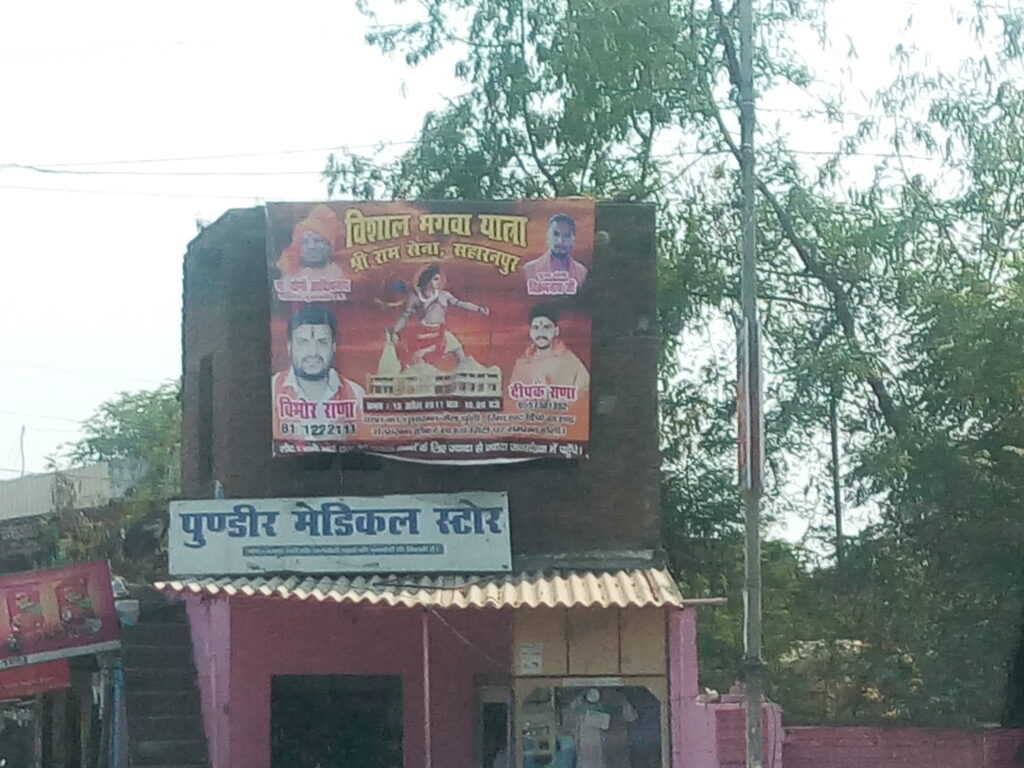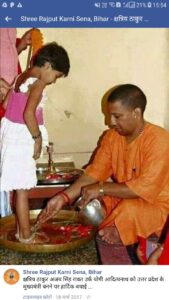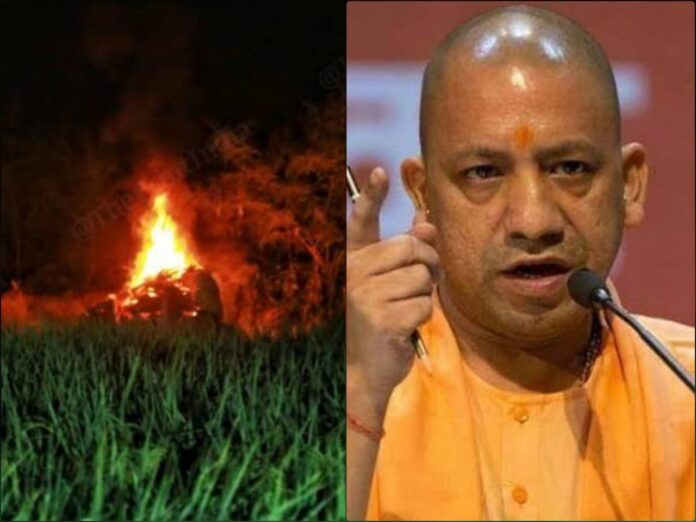The investigation into the infamous Hathras rape case has been transferred to Central Bureau of Investigation (CBI) on Saturday. It is the same central agency that was termed “a caged parrot” by the Supreme Court way back in 2013; the agency that concluded its “thorough investigation” with a “no rape” result in 2014 Badayun gangrape and murder case of two teenage sisters. Seven years have passed since then, seems nothing has changed except the chronology of events: in Hathras case, the UP Police based on forensic report of AIIMS said there was no rape involved and then the case handed over to CBI. In Badayun gangrape, the CBI had finally said there was no rape.
Byte of ADG (Law and Order) Prashant Kumar
Drawing parallels, nothing could be much stark to observe that seven years later we have the BJP government both at the center and in UP whereas in 2013, both had non-BJP or so-called secular governments but the modus operandi in crimes against Dalits is more or less the same. Here we need to ask a few uncomfortable questions at the outset:
Why the BJP government headed by Yogi Adityanath in UP being specifically termed “anti-Dalit”? Why his supporters at the other side of the fence are rejecting this claim as “selective outrage”? Has something changed qualitatively in terms of justice delivery and law for Dalit victims after 2017 regime-change? If yes, then then what has changed in these years with respect to caste related crimes in UP? We need to define this change in specific terms.
The Myopia of NCRB Data
Media and the civil society usually build its “anti-Dalit” narrative on the basis of data. Going by the National Crime Records Bureau (NCRB) data on Crimes against Scheduled Castes, we can infer something more revealing that would demand a perspective to understand the character of state. Let us first have a look at the data from subsequent NCRB reports ranging from 2006 to 2019.
Over the decade to 2016 (2006-16), crime rate against Dalits rose by 25%; from 16.3 crimes per 100,000 Dalits reported in 2006, to 20.3 crimes in 2016, according to an IndiaSpend analysis of 2016 NCRB data. The number of trials completed in court dropped by 28%- from 20,495 in 2006 to 14,615 in 2016. UP with 33,455 such cases pending fared worst. With 10,426 incidents, Uttar Pradesh reported the highest number of cases of atrocities against Scheduled Castes accounting for 25.6 per cent in 2016.

On October 21, 2019, NCRB released their 2017 annual report on “Crime in India”, with state-wise data on atrocities committed against members of Scheduled Castes from 2015 to 2017. Uttar Pradesh had the greatest number of complaints registered against SC atrocities in all three years covered in the report, with 8,357 in 2015, 10,426 in 2016 and 11,444 in 2017. This means that more than a quarter of the total caste-related crimes occurred in Uttar Pradesh. As per the data, Uttar Pradesh has witnessed substantial increase of 47% from 2014 to 2018 in the crimes committed against Dalits.
In a recently released NCRB report, data showed crimes against SC increased by over 7 per cent in 2019 as compared with 2018. The NCRB data also show Uttar Pradesh recorded the maximum number of cases against Scheduled Castes – 11,829 cases or 25.8 per cent of the cases reported across the country in 2019.
Now comparing the 25.8 per cent data released in recent NCRB report on share of UP in cases against SC with Pic 1, we see a 0.6 per cent increase from the rate observed during 2006-16. The analysis of NCRB data Y-o-Y obviously paints a grim picture of UP but this picture is sort of permanent also.
In-fact, there is no such period in last 15 years when the crime against Dalits have dropped compared to the previous year. It has been consistently on the rise. Noting that UP has witnessed four consecutive non-BJP governments before 2017, the allegation of “selective outrage” seems to have a point.
Caste Politics of SP-BSP
Moreover, Samajwadi Party (SP) and Bahujan Samaj Party (BSP) are essentially and officially caste- based political groups whereas BJP neither claims nor is it. BJP is a Hindu majoritarian party that has tried to co-opt each and every caste group into its fold after the Mandal agitation.
The effect of a caste-based party in power could be easily seen by the number of fake SC-ST atrocity cases filed during BSP-led government and the atrocity on Dalits in SP-led government. During one and a half decade when a non-BJP government was in power in UP, the basic social fault-line that emerged due to the caste-character of ruling party was OBC Vs Dalit, specially Yadav Vs Dalit.
This conflict became so intense during these years that it could not help SP and BSP coming together in last Lok Sabha elections, as this writer reported during the polls in an article titled When A Bad Chemistry Eats into Fair Arithmetic.
The Ajay ‘Singh’ Bisht factor
Now coming to Yogi Adityanath who became Chief Minister in 2017, we could see a resurgent Rajpoot identity that was missing all these years after Chandrashekhar fell from power and Rajnath Singh moved to Center. Although we could see the political clout of this small community only by looking just at the numbers: only 7 per cent in population and still claim to have given 5 CM’s and 2 PM’s! A CSDS survey report says maximum votes garnered by BJP in 2009 and 2014 elections was from the Rajpoot community in UP.

This was the sole reason that the return of BJP in power with a Rajpoot Ajay Singh Bisht aka Yogi Adityanath as CM, Sulkhan Singh was made DGP and Raghvendra Singh was made Advocate General. State Cabinet saw 7 Rajpoot ministers in all and a total of 56 Rajpoot MLA’s entered the assembly.
Time was ripe for Rajpoot community to execute a final vengeance against their past ‘blotted’ by none other than Vishwanath Pratap Singh, the messiah of SC-ST people who implemented Mandal Commission recommendations in 1990. Since then VP Singh is a villain in the eyes of upper castes who robbed them (through reservation) of their ‘natural’ privileges arising out of the “double-born” status (as described in the Hindu scripture Manusmriti for Rajpoot and Brahmin castes).
Call for a Rajpootana
It is not a co-incidence that Yogi Adityanath assumed office on March 19, 2017 and a violent trouble broke out in Saharanpur on April 20th between Rajpoot and Dalit community. It was not a stand-alone and accidental violence. There was a well chalked out game-plan. The poster boy of this plan was Sher Singh Rana, murderer of Phoolan Devi and out on parole. The idea was to re-claim Rajpootana i.e. rule of the Rajpoot community from Rajasthan to Western UP. The headquarter of this project was Shakumbhari Devi temple in Saharanpur, revered by Rapoots right from Rajasthan to UP as their Kul Devi.
Immediately after the Saharanpur anti-Dalit riots that saw more than 60 Dalit houses (specifically Jaatav houses, not Valmiki) burnt in Shabbirpur village, this writer visited the area and filed a long ground report after interviewing Rana. It was very clear from the writings on the wall that the Chief Minister is an accomplice and in-fact the patron of the call for establishing Rajpootana. Nothing could be more revealing than the pictures taken just around May 5th, 2017 in Saharanpur.


This Rajpootana theory was picked up by a few media outlets at that time but none followed it. Just before the Lok Sabha elections 2019, Yogi Adityanath visited Shakumbhari Devi temple in Saharanpur to start his electoral campaign. Sher Singh Rana, still out of jail was in full gear spreading hatred for Dalits and Bahujans throughout western UP. This again established the fact that Yogi Adityanath is active in the role of a caste leader and an accomplice to Rana in his project Rajpootana. See the pictures taken just before Lok Sabha elections 2019 and filed in a long report assigned by this writer.


The message was loud and clear: Rajpoot community can do anything to anyone in the state without fear of being punished.
The Confidence
Coming back to the recent Hathras case, an important development went unnoticed amidst call for justice to the victim. The Rajpoot community held its Panchayat in Hathras a couple of days back when the media was trying to enter Boolgarhi village. The video of this panchayat was posted on some select FB groups and doing rounds in WhatsApp groups but no one in media cared to carry it.
The speaker and people gathered in the meeting are referring to FSL report claiming that their boys are not rapists. The speaker in saffron kurta says: “We are key of this nation. If we will stand then it would be difficult for the whole country.”
Watch the video and see the confidence:
Caste panchayat of Rajpoot community in Hathras on October 1, 2020
This video speaks more than what the whole media has reported during last week. This is the confidence that comes out just because Chief Minister belongs to same caste. The Chief Minister is also aware of this caste-confidence and trust shown in him, so he tries his best to conceal secrets, barricade the village, gag media persons and MP’s, speak lies, conduct Narco test on the victim family etc.
The Mahant of Uttar Pradesh
The Chief Minister here is not a simple caste leader like Mulayam Singh Yadav or Mayawati. Be it Mulayam or Mayawati or for that reason any leader of any caste-group, their sole motto has been to get their fair share in the pie. The politics of so-called Social Justice in this country aspires for participation and share. Yogi Adityanath does not belong to that category of caste leaders.
Yogi is different in the sense that he is leading a revivalist project of change in the “Order”. Projecting himself as the caste-patron of Rajpoots, Yogi aspires to establish a feudal Rajpootana order i.e. the rule of Rajpoots. That is the reason why we see a desperation in his acts- lining up a thousand policemen on Delhi-Noida flyway to stop Rahul and Priyanka Gandhi from entering the state border.
Understanding caste-related crimes in Uttar Pradesh needs a perspective, not data. Data is misleading, but perspective is self-explaining. Criticizing Yogi Adityanath government on the basis of some conveniently picked-up incidents and data would never make a popular point. The point is to explain the caste-project that he is leading as a constitutional head of India’s largest state.
To answer all questions raised in the beginning, we just need to grasp the change in the character of leadership in Uttar Pradesh. The leadership in the form of Ajay Singh Bisht is for the first time “Head of an Order” i.e. Peethadheesh or Mahant. Previously he was Mahant of a Mutth. Now whole of Uttar Pradesh is his Mutth. The Order has to prevail at any cost, however big the constituency may be.
The author has worked as a journalist for several years and is the executive editor of a news and analysis website junputh.com




























[…] Decoding the Politics of “Order”: Hathras Gangrape and Caste-Crimes in Uttar… […]
Kudos to Mr Abhishek Shrivastava for this important analysis which goes deep into the unfolding Caste Project and how the whole of UP has been turned into ‘Mutt’ of a different kind.
[…] Decoding the Politics of “Order”: Hathras Gangrape and Caste-Crimes in Uttar… […]
[…] Decoding the Politics of “Order”: Hathras Gangrape and Caste-Crimes in Uttar… […]